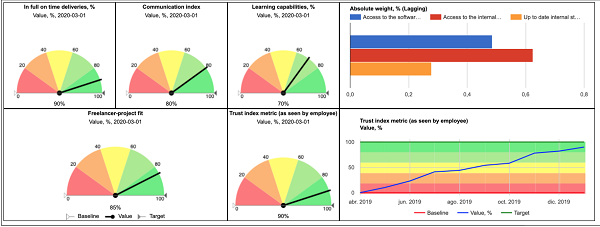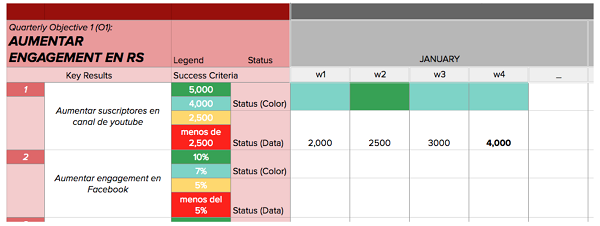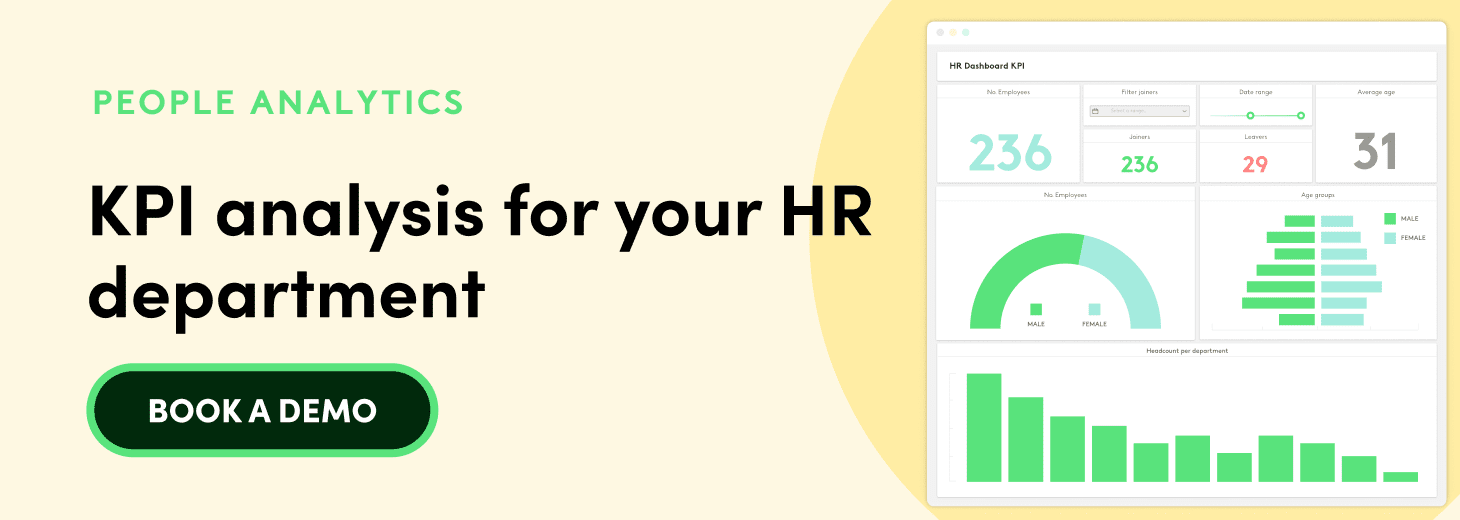How to use KPIs for measuring remote productivity

Using KPIs for remote working is one way of measuring the productivity of employees working from home. Managers everywhere know that, in these uncertain times, measuring the company's performance is challenging, yet vital.
While productivity has shown a marked increase of 13% during remote work (according to an article by the BBC, it's always worth tracking this yourself to see how the company is doing.
And tracking productivity while working remotely is beneficial for everyone. Not only does it help managers stay on top of what’s happening in their teams, but it also helps employees adapt to the new conditions and to not lose sight of the goals.
For your company, teleworking is a temporary solution while the return to the office remains uncertain, or maybe you're thinking of implementing it for the long term. Either way, it's a good idea to decide how to evaluate remote employees and conduct regular appraisals. Even so, it's also essential to find the right balance because nobody likes to feel that they're controlled during their work.
Why is setting KPIs so important?
KPIs (Key Performance Indicators) serve as a reference to evaluate processes and detect improvements. In other words, they are key metrics chosen by the company to measure the progress of an employee, the business, of the department, etc.
Justin Miles, HR Manager of Stadicus, stated in an article in Distant Job: “The right set of KPIs will allow your individual employees to objectively assess and contribute to your business’ projects without explicit micromanagement or supervision. KPIs should always be realistic and measurable, meaning that contributing to their fulfilment will add to the sense of teamwork and collaboration.”
It’s therefore important to establish a clear and efficient measurement system as this can bring a whole range of benefits for both the company and employees:
- Tracking milestones in relation to the final product.
- Information for the team and others in the company about how the product is developing.
- Objective data for decision-making, modifying projects, evaluation, etc.
- Simplified evaluation for team performance.
- Greater employee motivation which is directly linked to the quality of the final product and delivery times.
Characteristics of good KPIs
If we really want KPIs to be useful, we must ensure that they are well-defined and fulfil specific requirements. To do this, we can use SMART objectives that help us distinguish between objectives that are efficient, and those that aren’t.
A KPI can be considered SMART if it is:
- Specific: a KPI should refer to a specific task or action.
- Measurable: if it can’t be measured, then we cannot interpret the data nor use specific tools to do so.
- Achievable: the KPI objectives you set must be achievable under the conditions you have.
- Relevant: it's also vital to ensure that the metrics you choose are relevant to your business and that they add valuable information.
- Timely: finally, each KPI must be limited to a time period and subject to regular reviews.
The following example may make it clearer:
SMART objective: increase visitors to our website by 30% in one month by doubling our content and preparing ourselves to launch a campaign.
Characteristics
- S: increase visitors to our website.
- M: 30% more visits.
- A: doubling our content.
- R: to launch a campaign.
- T: in one month.
Main KPIs for measuring remote productivity
BSC Designer suggests we measure three key performance indicators of a remote worker:
- Self-discipline: the capacity to work independently
- Effective communication: the ability to communicate efficiently with the team and clients.
- Learning skills: ability to follow instructions and learn new things quickly.
How do we measure each of these aspects?
The first criteria - self-discipline - is much simpler than it seems. We only have to ask the employee for two things:
- That they send us the results of a test assignment by email and set a date and time limit.
- That they use a particular subject line in the email and add specific details.
With this, we can analyse three aspects:
- Did they send the email on time?
- Did they use the correct subject line as requested?
- With grammar and punctuation correct in the email?
This test usually achieves the success rate of around 80% to 90%. A result of 100% is unusual.
For the second criteria, we again use a test to measure someone’s ability to communicate. For example, we assign a specific task and give them three days to complete it. What are the possible outcomes?
-
Case 1: The task is delivered on time and with the quality expected. This would be considered a good result.
-
Case 2: The task is delivered on time but with a quality lower than expected. We should analyse what went wrong: were the task requirements unclear? Didn’t the person possess the necessary skills or weren’t they given enough time?
-
Case 3: The task is not delivered on time, but the person sends a notification. If this message arrives on the day of delivery, this is not a good sign.
-
Case 4: The task is not delivered on time, and the employee gives no explanation.
In cases three and four, we need to perform a more in-depth analysis of the person's skills and see if it's possible to help them improve their communication management.
And lastly, measuring an employee’s learning skills requires observation. We could assign the employee a task for which they would need to learn new skills, and then see how they apply them. We can ask them some follow-up questions to identify their strengths and weaknesses and gradually outline their learning curve.
With all of this information, we can create a dashboard that will give us an idea about each employee’s performance, at a glance.
And apart from that, we must also take other methodologies into consideration that will help us evaluate the productivity of remote workers:

Measure quality and quantity instead of time spent
We can observe the tasks completed and the quality with which they were done. To evaluate the performance, compare the results of two employees of the same grade.
Pay close attention to the results
Mike Desjardins, Founder of Cereslogic.com, explained in an article in Talking Talent: "If you're measuring performance correctly in an office environment, there will be very little difference in how you evaluate a remote employee vs. an office employee." Performance is best determined by outcomes and whether an employee is meeting measurable benchmarks or goals."
So, it basically consists of agreeing on certain objectives and measuring the results obtained. This reference point also serves as a source of motivation for employees.
Create clear goals and communicate expectations
In the same article we mentioned earlier, Business Coach David Schoenbeck also emphasises that “When handing out tasks to individuals on a virtual team, it’s important that you clearly express your expectations. Your explanation should include deadlines and specific details about the task itself."
So we, therefore, need to establish foundations, and later measure whether they have been met or not.
Internal feedback
We can also examine internal feedback. To do this, we can create a series of automated random and anonymous surveys. For example, every company employee evaluates other people’s work and answers just two questions: strengths and areas for improvement.
Other interesting remote work KPIs to analyse
Apart from the KPIs we mentioned earlier, it’s also a good idea to analyse other types of KPIs for measuring remote work productivity.
Activity KPIs
Activity is usually measured by the number of hours worked, based on what the employee records in the time management systems. This metric isn't too reliable as it doesn't guarantee that the employee has been as productive as we expect them to be. The only thing we do know from this method is that they have completed a working day.
There is also software available that tracks your employees’ activity on their computer. It’s one way of measuring productivity: what pages they have visited, which applications they have used, etc., and consequently, how much time they have dedicated to their work.
There are different options on the market, although Kickidler is one of the most popular. It enables you to track, do screenshots, create reports, etc.
Performance KPIs
Performance KPIs are probably the most reliable way of measuring someone's work.
There are different formulas around, but ideally, each company should choose the metrics that best suit their activity and needs. Nevertheless, some indicators can apply to everyone and can offer valuable information:
- Profit per employee = profit/number of employees. This is a basic indicator which tells us the profit generated by each of the company's employees. A high number is an excellent indicator for the company. If it needs improvement, the best course of action would be to invest in culture, training or technology designed to automate tasks and optimise processes.
- Revenue per employee = revenue / number of employees. In this scenario, we only look at the total revenue without taking expenses into account. This is a useful KPI which is similar to the previous one, but highlights the cost of human capital in relation to the business generated.
- Average task completion time = the total time taken to complete one task/number of times performed. This indicator allows us to measure the efficiency of the team.
Example: we measure the time it takes an employee to prepare an order that will be sent by courier, over the course of one week. We add the total time then divide it between the number of times we have measured to obtain an average. This experiment can be repeated regularly to identify improvements or problems. - Overtime per employee = total overtime worked / number of employees. Here, this indicator helps us identify if employees are doing a lot of extra hours. This could be a sign of a productivity problem or an excessive workload.
How to implement a working system that can be measured by performance KPIs
Google implemented a system to measure its employees’ performance, and it was so effective that many others have followed suit. We’re talking about OKR, which stands for Objective and Key Results. This method aims to organise each individual’s workload by setting objectives that work towards key results or the organisation.
You can implement it by following these steps:
- Annual global objective:
Each employee should set their own objectives for the year ahead. The employee has to reflect and decide which goals they personally need to achieve to contribute towards ensuring the business stays on track.
- Quarterly objectives:
To reach this annual objective, we need to identify the key steps to be taken over time and establish quarterly targets. At this point, we should also look for inspiring wording instead of specific numbers.
- Key results:
We must define which results will tell us that we’re on the right track. So, here is where the KPIs we’ve selected come into play, and we set them according to SMART system.
- Key actions:
Finally, for every result, we must assign three actions that’ll help us achieve what we’ve set for ourselves.
All of this will give us a clear road map for achieving our objectives, and also measure if we're on the right track, or if we're doing enough.
You can see Cyberlink‘s example here:

The study Getting Started with Objectives & Key Results explains that this methodology enables you to:
- Create a sense of commitment.
- Inform the workforce about the company's objectives.
- Stimulate clearer and more efficient communication.
- Set indicators that measure progress.
- Focus effort and align teams.
OKRs, therefore, give us a super useful method of working with metrics while teleworking and the ability to track each person's performance.
Every company has to discover the method that best suits its needs but, whichever one that is, it’s vital to start with clearly defined foundations.


